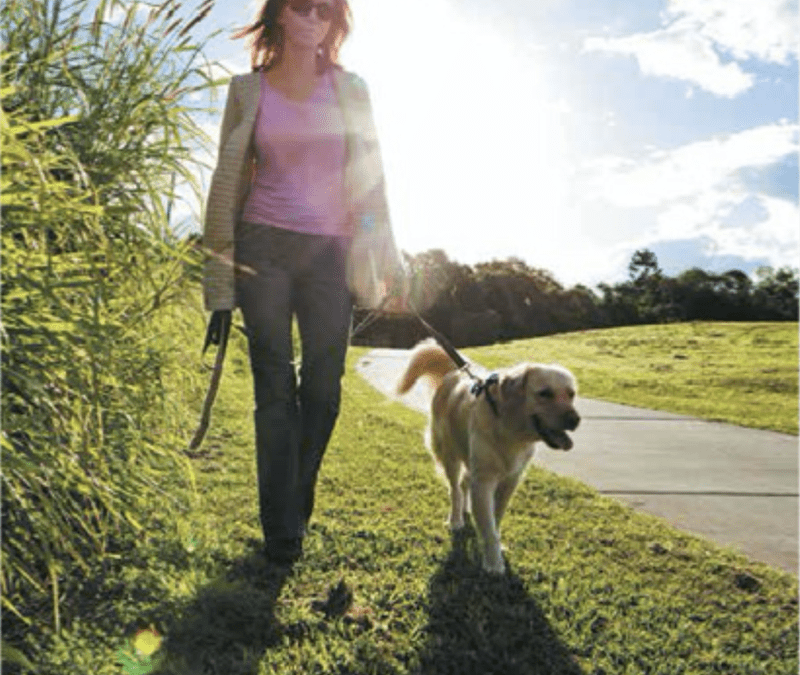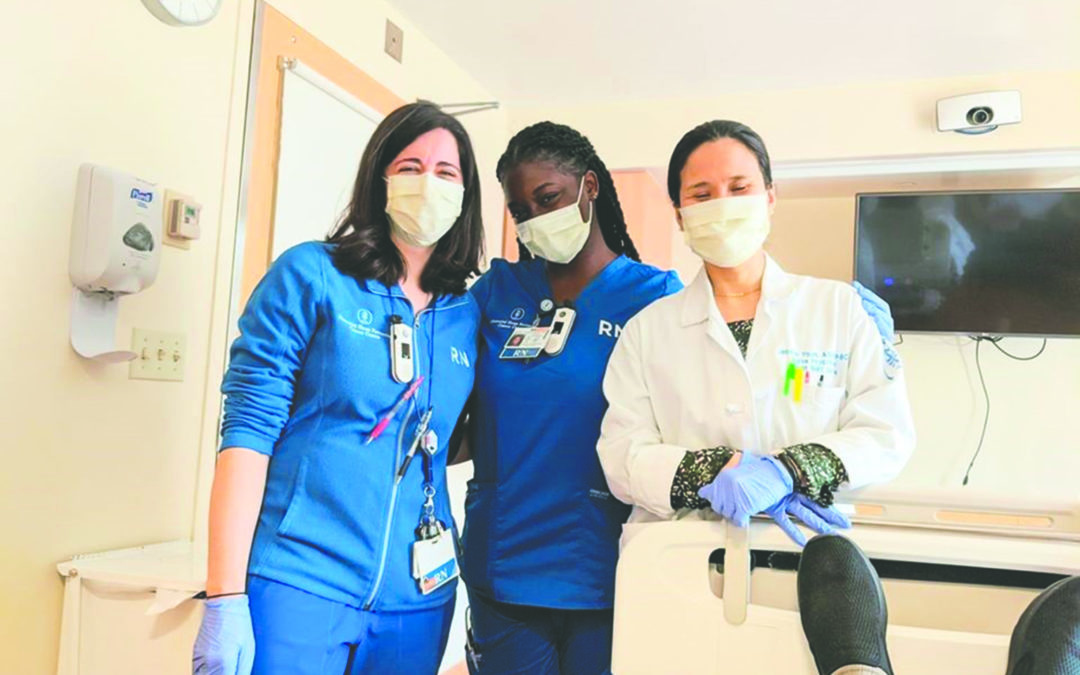
Give Yourself – and Your Kids – a Break
LIBN Column April 15, 2020, By Jenna Kern-Rugile
Rumor has it that Shakespeare wrote King Lear during the plague. So, how’s working at home during our modern day plague going for you?
Social media and other sources are replete with articles about how you can use your time during the pandemic to be more productive. Not only are you supposed to be working remotely at full capacity – or even harder, because, after all, it’s a time of crisis for your company– but you’re told it’s a great time to learn a new hobby, declutter your closet, get in shape and, while you’re at it, write that play or novel that’s been brewing in the back of your mind.
While you and your family are experiencing one of the most stressful, uncertain and challenging times in our country’s history, you are being encouraged to tackle your to-do list and use all of those “extra” hours to accomplish more than ever.
Really?
The truth is, we are all in survival mode. Not since 9-11 have we felt a similar shock to our systems and existential threat to our welfare. And, with no definitive end to this period of isolation and upheaval in sight, you are bound to be way more than a little off your game.
The roles we use to define our worth—our ability to earn a living, to protect our families, to provide an education for our children—are under threat. A large part of our identities are based on interactions with our colleagues, friends and family. But the need for social distancing has thrown those foundational elements of our lives into chaos.
While the chances of you or a loved one dying from COVID-19 may be relatively small in stark terms of percentages, it’s not at all unreasonable to be so frightened that focusing on even simple tasks is difficult.
Bottom line: Now is not the time to put pressure on yourself to be a superstar. Give yourself—and your employees, bosses, kids and everyone else—a break. If you’re working from home, expect to be less productive than usual. We’re all living through a period when our bodies and minds are on high alert. It’s normal to feel overwhelmed. In fact, it would be unnatural to feel otherwise.
If you’ve got kids at home, the challenges are multiplied. You’re now expected to be teacher, playmate and parent. If you work on the front lines, or in a grocery store or any other public-facing job, you’re putting your health at risk. And your financial portfolio has likely tanked.
For everyone’s sake, adjust your expectations. Expect your kids to be more clingy and anxious than usual. Expect them—and yourself— to be more tired or easily triggered to anger. Let your loved ones express their feelings, and talk to someone about your own. Tell your kids it’s normal to be frightened, but reassure them that the best scientists in the world are working on solutions, and that we will get through this.
Instead of training for the marathon, focus on the basics for you and your family: Eat healthy foods, mostly. Take some walks (dogs are loving this). Get up from your desk and stretch. Play ball with the kids. Allow yourself to get some extra sleep. Keep clearly defined work hours. Limit your news consumption to a “need to know” basis.
Don’t isolate. Use technology to stay in touch with peers, friends and family. Texts aren’t enough. Use Zoom or FaceTime so you feel truly connected. And when speaking with your co-workers, ask them how they’re doing.
We’re in uncharted territory, and there’s no right way to cope. This is a time when doing the best you can is a perfectly acceptable goal.
Bio: Jenna Kern-Rugile is Director of Communications at North Shore Child & Family Guidance Center, a children’s mental health agency that serves all of Nassau County. The Guidance Center is seeing new and existing clients via video and phone while its buildings are closed. For more information, visit www.northshorechildguidance.org. To schedule an appointment, email info@northshorechildguidance.org or call (516) 626-1971.

Checking the Coronavirus Box Score, Published in Blank Slate Media, By Andrew Malekoff
As a child growing up in New Jersey in the 1950’s and 60’s, one of my favorite things to do when school let out for the year was to get up, ride my bike to the candy store, meet up with friends, pick up a newspaper and check out the baseball box scores from the previous night’s games.
I liked reading about my favorite players. I’d check their batting averages, earned run averages, runs batted in, stolen bases and home runs.
I cannot fully imagine what it is like to be a kid today, at a time when school let out for the first time I can ever recall for reasons other than the school year coming to its natural ending. Rather, it came to an abrupt end for reasons of health, safety, life and death.
That’s a lot for a kid to handle.
The end of school was always bittersweet for me. I was happy and relieved to get a break from the daily routine, and sad to say goodbye until September. It was a ritual that was a normal part of growing up. It was also a far cry from leaving with no decent goodbye and no baseball or box scores to look forward to—only an inescapable sense of incomprehensible dread.
Riding one’s bike to a store of any kind today requires, in addition to a helmet, wearing a mask and gloves and staying six feet apart from everybody else, including your best pals.
As for box scores, the only one you can find in print or on social media these days is a list of states, cities, towns and villages and the corresponding number infected and dead.
Our children left school unceremoniously amid a global pandemic. Whether they say it in so many words or express it through their behavior, don’t lose sight of the fact they are experiencing loss and are grieving all that has been taken from them.
Our kids fear for the future. And you don’t have to say a word for them to see how this is affecting you and how you are managing your own stress and uncertainty.
Although keeping routines at home can help, to whatever extent our kids experienced a sense of normalcy in their lives, their lives are no longer the same. If there was tension in your home before the shutdown, it has likely intensified. Where there were little or no fears about mortality, they may now be pervasive. Loss is a key theme; the loss of normalcy, a sense of safety and hope.
What to do? Try your best to be attuned to and manage your own anxiety. Remain calm. Don’t force, but encourage your children to express their feelings. How? By striving to be a good listener. Do your best to provide them with honest and accurate feedback and information. Be reassuring and hopeful. Limit media exposure (box scores included). And, finally, don’t hesitate to seek outside professional help, which is now available by phone and video conferencing through North Shore Child & Family Guidance Center.
If there is an opportunity, model and encourage kindness wherever and whenever the opportunity presents itself. To paraphrase Mother Teresa, acts of kindness may seem simple, but their echoes are endless and hopeful.
Andrew Malekoff is the executive director of North Shore Child & Family Guidance Center, the leading children’s mental health agency on Long Island. The Guidance Center is seeing new and existing clients via telephone and video during the COVID-19 crisis. To make an appointment, call (516) 626-1971 or email info@northshorechildguidance.org. Visit www.northshorechildguidance.org for more information.

A Quarantine Trendsetter, By Andrew Malekoff, Anton Media, April 13, 2020
In my February column, I wrote about the fact that I had a stem cell transplant in early December 2019, about a month before I heard for the first time about the coronavirus.
The transplant entailed getting an unrelated donor’s stem cells to replace mine; then, if all went according to plan, these cells would grow into a new immune system to seek and destroy my cancer cells.
As a result of the transplant, all of my childhood vaccinations became ineffective. I was instructed to stay in isolation for at least four months in order to avoid infectious and possibly deadly diseases like influenza. Consequently, I have been quarantined since December.
Just a day before writing this, a friend told me that I’m a “trendsetter.”
I knew very little about viruses before the coronavirus came along—only that they were microscopic infectious organisms that invade living cells and then reproduce. In an effort to review what I had been (mostly unconsciously) protected from before transplant, I Googled the Centers for Disease Control and Prevention (CDC) and found a piece entitled, “Vaccines for children: Diseases you almost forgot about.”
I was reminded that most of us had vaccines as children for some of the nastiest viruses, including polio, which invades the brain and spinal cord and leads to paralysis; tetanus, a potentially fatal disease that causes lockjaw; whooping cough, which can lead to violent coughing that makes it difficult to breathe; and many more.
Most older adults are familiar with chicken pox, mumps and measles. I had two of them as a young teenager. One that I forgot about is diphtheria, which affects breathing or swallowing and can lead to heart failure, paralysis and death. There are several more.
I imagined the panic that parents must have felt and the pain that young children must have experienced before vaccines were discovered to prevent these horrible infectious diseases.
For the time being, I cannot replace my old vaccines. I must wait for at least one year while my new immune system gets stronger.
The idea of being in isolation and maintaining a safe social distance for a few months post-transplant made sense to me. I was well prepared by doctors and nurses and I knew my wife would be a great caregiver, so I thought I could do the time.
And then, the coronavirus came along.
For me, being quarantined was an old hat by the time a national emergency was declared and everything started to shut down. I learned that this new virus’ main target was the lungs and people older than 60 years with underlying health conditions were its primary targets.
I fit the bill and knew that I’d have to do more time: at least another three months, my transplant doctor told me. The only difference is that this time, hundreds of millions of people would be joining me.
I was well-prepared before and after my transplant. I knew why I had to self-isolate and for how long. No one, including me, was prepared for COVID-19 and the mass quarantine that it now requires—not only to protect oneself and one’s family, but also to protect strangers. Mostly older strangers like me.
Scientists and other health professionals were the heroes of viral epidemics gone by. I do believe we will get through this, with people like immunologist Dr. Anthony Fauci leading the way.
Still, the unknown is what is most frightening. We all want answers, yet some remain illusive at the moment. This is an opportunity for all of us to strengthen our tolerance for ambiguity.
When will this end? No clue. Will it come back? No idea.
Although my new immune system needs more time to protect me, I just found out after a PET scan that I’m in complete remission from my cancer.
Will it come back? No idea.
We are all in the same boat, living in uncertainty, whether young or old, healthy or unwell. As Plato said, “Be kind, for everyone you meet is fighting a harder battle.”
Andrew Malekoff is the executive director of North Shore Child and Family Guidance Center. To find out more, call 516-626-1971 or visit www.northshorechildguidance.org.

Strength In Diversity, By Andrew Malekoff, Anton Media, February 16, 2020
In my August 2019 column titled “Thank You,” I expressed my gratitude for the cancer researchers and practitioners who have been instrumental in getting me through the last 10 years of my life. As I explained, my cancer was responsive to treatment, but it was persistent and kept reemerging.
Since that piece was published, it was determined by my “team” that I was eligible for an allogeneic stem cell transplant, which meant getting someone else’s stem cells to help rebuild my immune system. Although this is a risky treatment, it does offer the possibility of a cure, which routine chemotherapy and immunotherapy do not, at least not for my type of blood cancer.
The team thought that given my age and overall good health and fitness, this was the best window within which to proceed. After considering all of the information with my family, I agreed.
The transplant was scheduled for December and required that the hospital find a non-related donor. I was fortunate enough that a stranger was discovered through the donor registry.
I spent three mostly difficult weeks in the hospital. The first phase was “conditioning,” in which I received high doses of chemotherapy and total body irradiation. Next came the transplant. The final and longest phase, which I am in now, is recovery. There is the risk of “graft versus host disease”– the possibility of the new cells not only attacking the cancer, but other organs in my body—which is part of what recovery aims to prevent.
Currently, I am vulnerable to many ailments and illnesses as I have the immune system of a newborn baby. It will become stronger over time, and eventually I will receive all of the childhood immunizations, which are now rendered useless.
This is all background that leads to what I really want to talk to you about: my experience with the personnel involved in the transplant.
The three nurses depicted in the photo, along with an attending physician (not pictured), presided over my stem cell transplant on Dec. 12, 2019, at Memorial Sloan Kettering Cancer Center in New York City. Some consider transplant day to be a new birthday. So now, I have two. I don’t know the identity of my donor, although there is a process in which I can communicate with that person to thank him or her directly if I so choose, in due time.
Obviously, as the photo reveals, the nurses are a diverse group. At the time of transplant, I asked them a little about themselves. Among the three nurses are a Muslim, Christian and Buddhist. The attending physician is Hindu. I am Jewish. There are racial and ethnic differences as well.
I teared when I said, “With all that is happening in the world, all of the hate, you represent the truth about the value of diversity.”
With their permission, I snapped this photo with my cell phone from my hospital bed. Amid the rampant and unrelenting stories of hate, this is a graphic reminder that diversity is our strength.
We cannot afford to squander it.
Andrew Malekoff is the executive director of North Shore Child and Family Guidance Center, which provides comprehensive mental health services for children from birth through 24 and their families. To find out more, visit www.northshorechildguidance.org.

